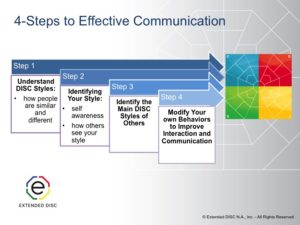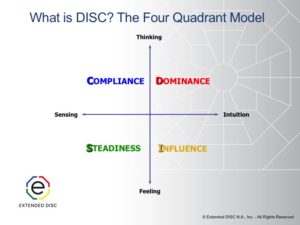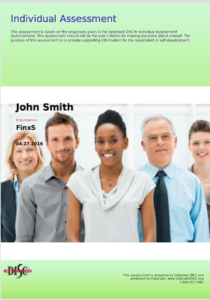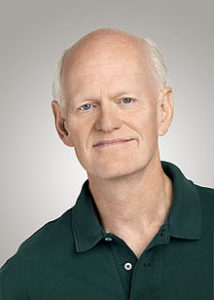Are Millennials really that different? How does knowing DISC tests and DISC profiles help in understanding them better?
The Millennial generation is a hot trending topic. Currently, they are the largest group in our workforce according to the Bureau of Labor Statistics. Yet, companies are still challenged with recruiting and retaining them. We point them out as being different from the workforce and generations of the past, but are Millennials really that different?

Workforce Moving from Baby Boomers and Gen X to Millennials
Millennials are defined as those born between 1980 and 1995. According to the Bureau of Labor Statistics, there are close to 70 million people born between those years. Traditionally, workers have been predominantly Baby Boomers who are likely to be S profile types. We describe S profile types as steady, amiable, and reliable. They are the ones that stay with you for 30 years and then retire with the gold watch. These Baby Boomers made up 40% of the workforce, but that trend is changing.
Are Millennials really that different as we define them?
Millennials now make up the largest group in the current workforce. What’s changed? Well, we’re finding that Millennials tend to be more I profile types. I-profiles make up only 27% of the Baby Boomers, but over 40% I-profiles for Millennials! The difference in personality types may be the challenges with Millennials.
Typically Millennials are seen as young and energetic. They often look for change and new opportunities. They tend to be filled with entrepreneurial spirit. Probably, the most defining term for this group, is how they are “tech-savvy”. Millennials are the generation most closely associated with technology. The rapid evolution of technology has moved our society at an unprecedented pace. Our smart phones are mini-computers. We use laptops, tablets, and phones all at the same time. We are no longer locked to our desk and office. New technology has given workers the freedom to work whenever and wherever they want. No one has embraced this concept better than the Millennials.

Labeling Millennials
Millennial have been labeled as “lazy, unmotivated and unproductive”. Does understanding their DISC types help with misconceptions and improving our interactions? Are Millennials really that different? We asked Halle, one of our own staff Millennials, to give us her view. She has written blogs about her own experience. Now is her time to speak up for her generation.
We view it as positive when Millennials are labelled as “tech-savvy.” However, there appears to be more adverse labels for them rather than positive. For example, adverse labels such as “lazy, unproductive, and unmotivated” can be harsh, unfair and even untrue. One thing we know is when similar DISC personality types get together, their styles can get amplified. Could it be that the strengths of the I-personality types are being overly expressed? Could they be highly social and thus, appear to be adverse to tasks? Are we putting too much weight on looking at the group as one entity? What may seem like a trend of some suddenly becomes a sweeping statement for an entire group.
Millennials truly do view technology different. Often, older generations view technology as something that is learned and separate from life. Yet, Millennials have grown up with it and find less of a separation between tech and life. Millennials view work and personal life as much more blended and the lines between the two are less clear. They may be constantly checking phones to generate ideas for work through social media.
Unproductive and Lazy
We may see a group of young workers as unproductive because they are always on their phone. When we are on our smart phones at work we may only use it to text, check news or look at social media. Since that is our experience, we naturally assume that everyone else is using their phone for the same reason. We judge our own actions by intention because we know our intent. Yet, we tend to judge others by the behaviors we observe. We then assign intent to those behaviors and it’s not always correct. That’s not always fair, but remember all DISC profiles are guilty of making value judgments.
Self-Obsessed
In today’s world, the display of one’s personal life on social media platforms has become the norm. Millennials may be perceived as ‘self-obsessed’ because they’re constantly posting ‘selfies’ or giving people updates on recent successes. In the end, Millennials are just practicing the norm associated with the emergence of social media. People want to be accepted and given feedback. I-personality types like to be liked. They thrive off of positive feedback. Although Millennials tend to post on social media more often, depending on their DISC style they may post and interact differently. I-personality types may post a photo with a long caption, and then interact with those who like or comment on it. A C-personality type or S-personality type may post about their life on social media as well, but you may not see them interacting with others at the same level.
Tips to Improve Interactions from a Millennial
Halle stresses how important it is to receive meaningful feedback. The intention is a desire for frequent input from others; not to be coddled. Growing up as Millennials, parenting styles have changed. Parents, coaches, teachers, and social media are sources of frequent feedback for them. Meaningful feedback is not just about a pat on the back or hearing lots of kudos. It’s about constructive ways to improve performance and be involved in the success of the team. The more often, the better.
The second tip from Halle is to be more open and flexible to change. Millennials have a lot of new and changing ideas in our fast paced world. We need to listen and hear them out. However, they can learn from older generations as well. Baby Boomers and Gen X have life experience and that can also help make the best decisions for new ideas and change. We all need to put the negative stereotypes away and focus on the positive. We can learn from each other.
Ultimately, are Millennials really that different?
 Look at the individual as a person and not as a generation. Think of your work group, not as generation gaps, but as a diverse team. Each team member may have different DISC profiles, but each bring strengths and areas of development to the group. When we make an effort to interact better with diverse team members, we end up with a more valuable and multi-dimensional team.
Look at the individual as a person and not as a generation. Think of your work group, not as generation gaps, but as a diverse team. Each team member may have different DISC profiles, but each bring strengths and areas of development to the group. When we make an effort to interact better with diverse team members, we end up with a more valuable and multi-dimensional team.
However, stereotypes exist for a reason. We need to group people together into Millennials, Gen X and Baby Boomers because it helps us make broad decisions. For example, how do we create work settings that attract certain groups and how can we retain certain groups within our organization?
As managers and co-workers, we need to avoid making value judgments and sweeping statements. We need to be responsible for our own perceptions and actions. We need to focus on the positive aspects of each group or person and view each individual uniquely. Can we modify our own behavior since that is the one thing we can control? We can’t force others to change. Ultimately, we can choose to modify our behavior with others to improve interaction.
The biggest take away is that we know there are challenges when generations come together, but in reality, the challenges aren’t that new. Each generation of the past seemed to have the same challenges if we truly think about it. If we look beyond labeling groups and focus on each interaction then we have the best chance of managing and working with others. Hence, are Millennials really that different? Probably not.



 Look at the individual as a person and not as a generation. Think of your work group, not as generation gaps, but as a diverse team. Each team member may have different DISC profiles, but each bring strengths and areas of development to the group. When we make an effort to interact better with diverse team members, we end up with a more valuable and multi-dimensional team.
Look at the individual as a person and not as a generation. Think of your work group, not as generation gaps, but as a diverse team. Each team member may have different DISC profiles, but each bring strengths and areas of development to the group. When we make an effort to interact better with diverse team members, we end up with a more valuable and multi-dimensional team.

 We build these 4 Steps to Effective Communication in our DISC reports, and training materials. Step 1 is to understand what D, I, S and C personality types mean. Step 2 is learning to identify your own DISC style. How would you increase self-awareness of how you prefer to behave or do things? In addition to self-awareness, learn how others see your behaviors. Step 3 is a strength of the DISC Model. Learn to identify the main DISC style of others. Lastly, Step 4 is to modify your own behaviors to improve interaction and communication.
We build these 4 Steps to Effective Communication in our DISC reports, and training materials. Step 1 is to understand what D, I, S and C personality types mean. Step 2 is learning to identify your own DISC style. How would you increase self-awareness of how you prefer to behave or do things? In addition to self-awareness, learn how others see your behaviors. Step 3 is a strength of the DISC Model. Learn to identify the main DISC style of others. Lastly, Step 4 is to modify your own behaviors to improve interaction and communication. While 99% of us are a combination of DISC styles, we look at each of the 4 DISC styles in its 100% form to help us learn about them. The key things to remember before we go into each style is that no style is better or worse. We share similarities and we have differences between the DISC styles. We all have strengths and areas of development.
While 99% of us are a combination of DISC styles, we look at each of the 4 DISC styles in its 100% form to help us learn about them. The key things to remember before we go into each style is that no style is better or worse. We share similarities and we have differences between the DISC styles. We all have strengths and areas of development. The DISC Diamond model is a tool for observing and analyzing behaviors. A simple way to explain it is how we prefer to do things. The Diamond takes the DISC 4 Quadrant Model to the next level by creating sections of each quadrant to better identify a person’s DISC style.
The DISC Diamond model is a tool for observing and analyzing behaviors. A simple way to explain it is how we prefer to do things. The Diamond takes the DISC 4 Quadrant Model to the next level by creating sections of each quadrant to better identify a person’s DISC style. Step 2 is becoming more aware of our DISC behavioral style. This is a good place to provide your clients and employees with their Extended DISC Assessment now that they have a clearer understanding of what is DISC. DISC does not classify people into good or bad or better or worse. There are no right or wrong results, but the questions are forced-choice. Your DISC profile is based on self-evaluation. The results do not limit a person’s ability to develop in another direction or work environment. The test does not measure intelligence, skills, abilities or attitudes. The focus is strictly on how a person prefers to do things or his or her natural behavioral style.
Step 2 is becoming more aware of our DISC behavioral style. This is a good place to provide your clients and employees with their Extended DISC Assessment now that they have a clearer understanding of what is DISC. DISC does not classify people into good or bad or better or worse. There are no right or wrong results, but the questions are forced-choice. Your DISC profile is based on self-evaluation. The results do not limit a person’s ability to develop in another direction or work environment. The test does not measure intelligence, skills, abilities or attitudes. The focus is strictly on how a person prefers to do things or his or her natural behavioral style. Ultimately, what we are trying to develop is a strategic communication response. When we understand our natural style, how we prefer to behave and how we show up under pressure then we are able to proactively make effective adjustments.
Ultimately, what we are trying to develop is a strategic communication response. When we understand our natural style, how we prefer to behave and how we show up under pressure then we are able to proactively make effective adjustments.



